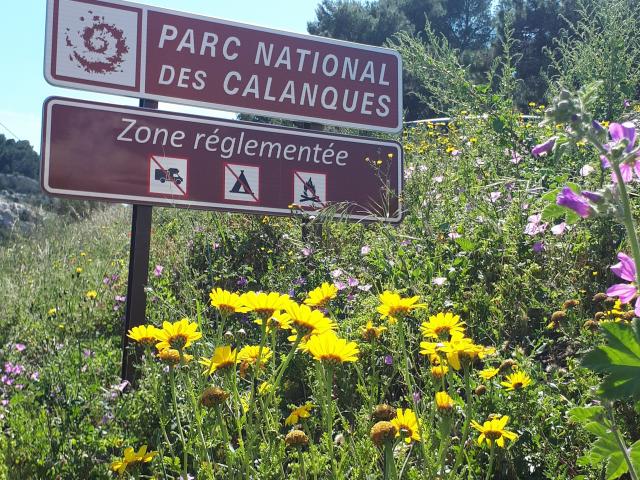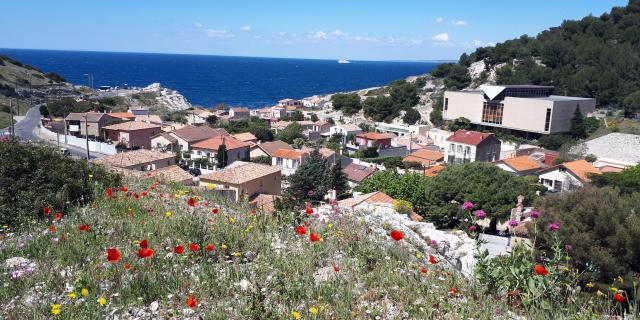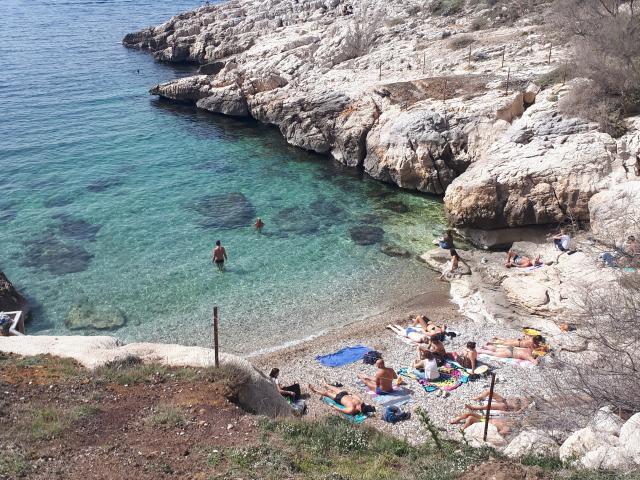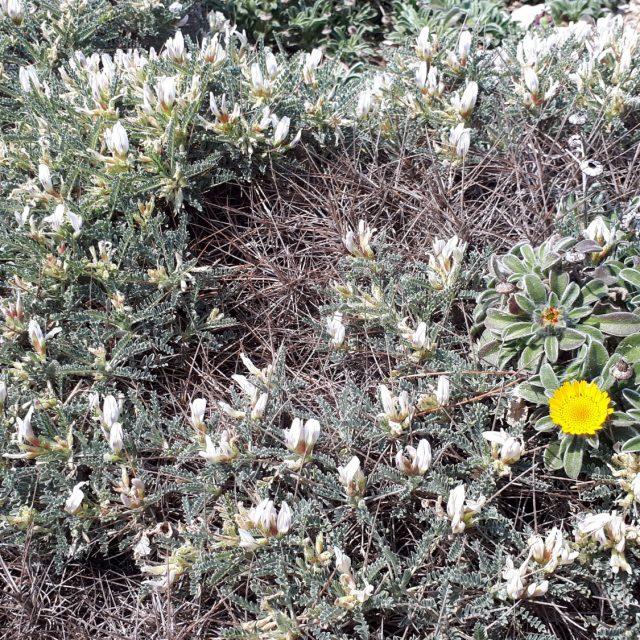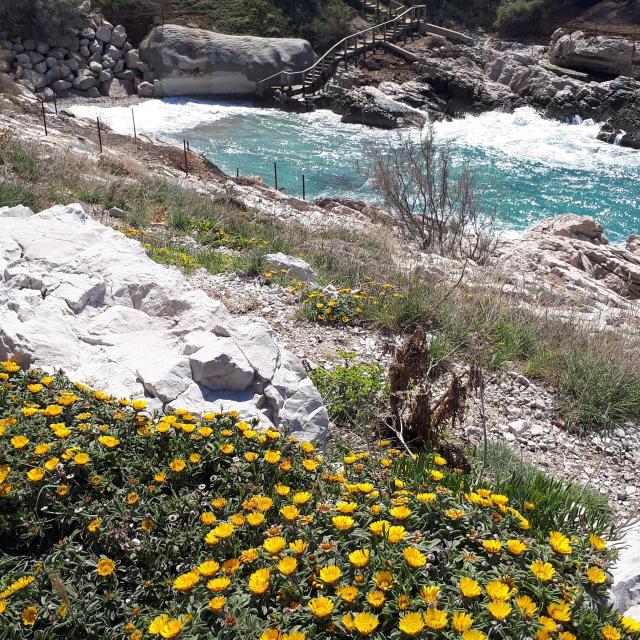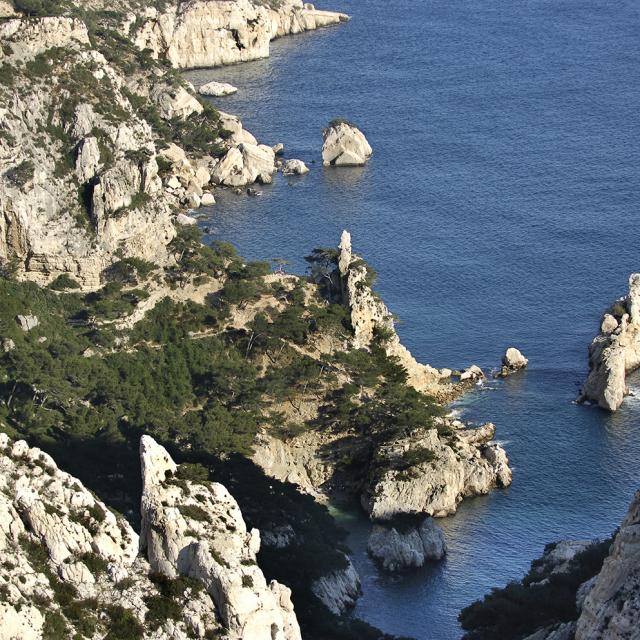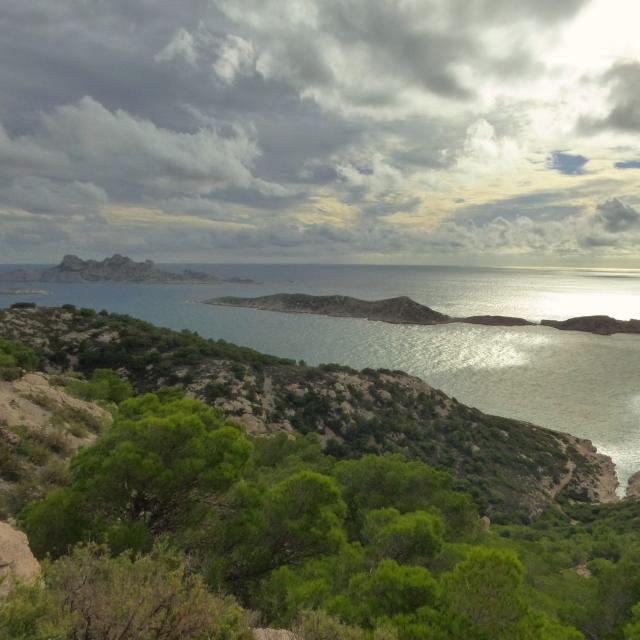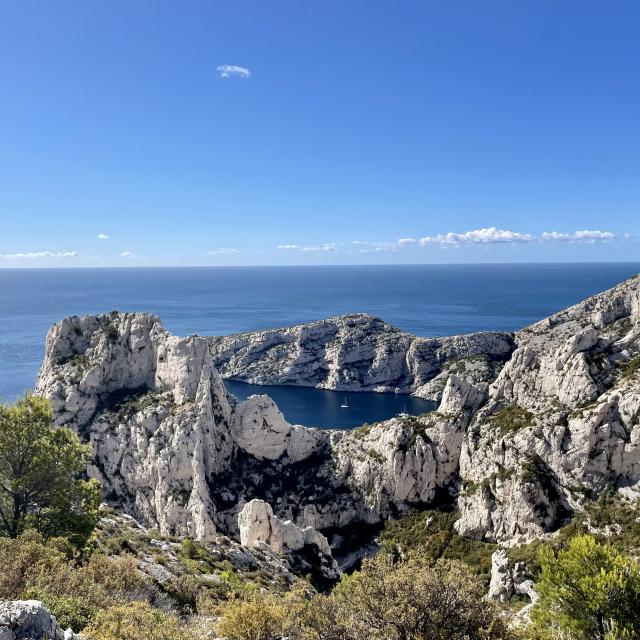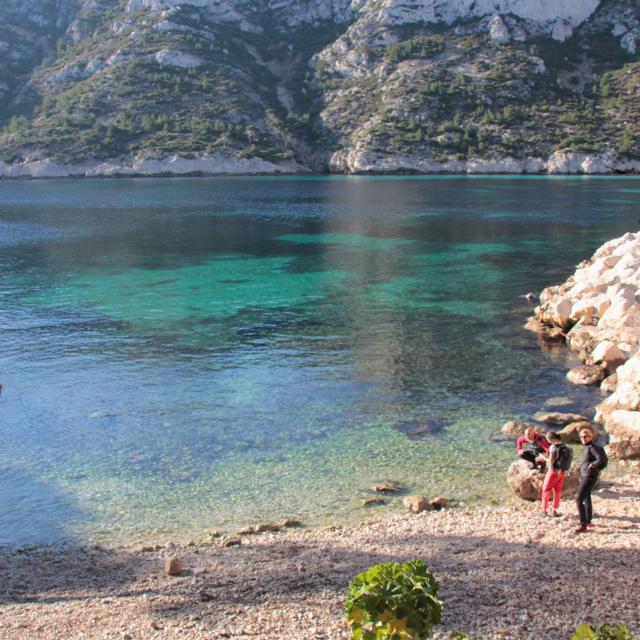The entry of the Calanques National park
Welcome to the terrestrial heart of the national park. The Parc National des Calanques is the first peri-urban national park in Europe, covering both land and sea areas. So, when you drive along the Marseilles seafront, preferably by bus or using a soft mode of transport, there is a road sign of cultural and tourist interest that should catch your attention. It is located at the foot of an old anti-tank wall, a vestige of the Second World War and dominated by a small rounded mountain, Mont-Rose, which rises to 84 metres and indicates the entrance to a magnificent, fragile and much coveted area.
